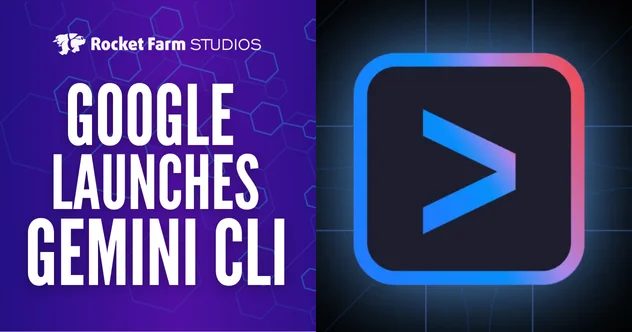Download our E-BOOK
Deep Linking and Deferred Deep Linking in Mobile Apps
September 13, 2024
by Dan Katcher
Capturing and maintaining user engagement in mobile apps is no easy feat. In a time where users have countless apps at their fingertips, it’s crucial to ensure that your app not only stands out but also delivers a seamless, value-driven experience. One of the most effective ways to achieve this is through deep linking and deferred deep linking. These strategies are game-changers, allowing you to guide users directly to specific content within your app from external sources, significantly enhancing their journey and engagement.
Let’s break it down. Deep linking refers to the practice of using URLs to navigate users to specific pages or content within an app, bypassing the usual entry points like the homepage. This is particularly useful for directing users to a promotional offer, a new feature, or any high-value content. On the other hand, deferred deep linking takes this a step further. It remembers where the user intended to go, even if they haven’t installed the app yet, and directs them to the exact content post-installation. Both techniques are critical for improving user experience, boosting engagement, and increasing the likelihood of positive reviews.
In this article, we’ll dive into the intricacies of implementing deep linking and deferred deep linking, covering their benefits, the technical setup, and best practices. Whether you’re looking to enhance user retention, streamline the onboarding process, or maximize the impact of your marketing campaigns, mastering these strategies is key.
Understanding Deep Linking in Mobile Apps
Deep linking is a method that uses URLs to link users directly to specific content within an app, rather than simply launching the app. Think of it as a shortcut that takes users straight to the content they need, bypassing the usual navigation hurdles. This differs from standard app links, which typically just open the app’s main screen or homepage, leaving users to find the desired content themselves. Deep linking offers a streamlined user experience by providing immediate access to relevant content, increasing the chances of engagement and conversion.
Types of Deep Links
- Basic Deep Links: These links are straightforward; they direct users to specific content within the app if it’s already installed on their device. For instance, if a user clicks on a deep link from an email or social media post, the app will open directly to the intended page, such as a specific product in an e-commerce app or a detailed article in a news app. However, if the app isn’t installed, the user might encounter an error or be redirected to the app store without the deep link context, which can be frustrating.
- Universal Links (iOS) and App Links (Android): To address the limitations of basic deep links, Apple and Google introduced Universal Links for iOS and App Links for Android. These are more versatile, working across web and app environments. If the app is installed, they’ll open the app to the specified content. If not, they can redirect the user to the relevant page on the website or prompt an app store installation, maintaining a seamless user experience. Universal Links and App Links enhance the reliability of deep linking by ensuring a consistent behavior, regardless of the user’s app installation status.
Use Cases for Deep Linking
- Navigating Users to a Specific Product Page in an E-commerce App: Imagine sending an email campaign promoting a sale on a particular product. With deep linking, users who click on the link in the email can be taken directly to the product page within the app, where they can immediately make a purchase. This reduces friction and enhances the likelihood of conversion.
- Directing Users to a Particular Article in a News App: Let’s say your news app covers a breaking story, and you want to share it on social media. Deep links allow users to click the link and be taken directly to the full article within the app. This creates a seamless experience, especially for users who have the app installed but don’t want to navigate through multiple sections to find the story.
- Launching a Specific Feature or Promotion within the App: If you’re introducing a new feature, such as a rewards program or a limited-time promotion, deep links can guide users directly to that feature’s page. For example, a gaming app could use deep linking to direct users to a new level or challenge, encouraging engagement and interaction.
By understanding and implementing these types of deep links, you can significantly enhance the user journey, making it more intuitive and direct. This not only improves the overall user experience but also increases the chances of achieving your app’s engagement and conversion goals.
What is Deferred Deep Linking?
Deferred deep linking takes the concept of deep linking a step further by addressing a significant challenge in user acquisition: guiding new users to specific content within an app, even if the app isn’t installed on their device. Unlike basic deep links, which only work if the app is already installed, deferred deep links remember the user’s intended destination, ensuring a smooth transition from installation to engagement.
How Deferred Deep Linking Works
- Creating a Deferred Deep Link: A deferred deep link is a special type of link that contains information about the specific content or page you want the user to see. When a user clicks on this link from an external source—whether it’s an email, social media post, or ad—it carries metadata about the intended destination within the app.
- Guiding the User to the App Store: If the app is not installed on the user’s device, the deferred deep link guides them to the app store for installation. This process is seamless and ensures that the user is directed to the correct app store page for their device (iOS App Store or Google Play Store).
- Redirecting to the Specific Content Post-Installation: Here’s where deferred deep linking shines. Once the user installs and opens the app for the first time, the deferred deep link’s data is retrieved, and the user is automatically redirected to the specific content or page they were initially interested in. This immediate redirection to relevant content greatly improves the user’s onboarding experience, as they don’t have to manually search for the content they were initially promised.
Importance of Deferred Deep Linking
Deferred deep linking solves a major problem in mobile app marketing: the drop-off that often occurs between a user clicking on a link and finding the promised content after installing the app. Without deferred deep linking, a user who clicks on a promotional link, installs the app, and then has to navigate manually to find the relevant content, may feel frustrated or lost. This frustration can lead to poor first impressions, lower user engagement, and even app uninstalls.
By providing a seamless experience, deferred deep linking:
- Enhances User Acquisition: It ensures that new users are immediately presented with the content that drew them to the app in the first place, increasing the chances of engagement and reducing the likelihood of abandonment.
- Streamlines Onboarding: Users are taken directly to the relevant content or feature, making the onboarding process smoother and more intuitive. This positive initial experience can significantly impact user retention and satisfaction.
- Boosts Marketing Campaign Effectiveness: Marketers can create more compelling campaigns by guaranteeing that users will land on the intended content, whether it’s a special offer, a feature highlight, or a piece of content. This leads to higher conversion rates and better ROI on marketing efforts.
In essence, deferred deep linking ensures that the path from user acquisition to engagement is frictionless, guiding users seamlessly from discovery to value. This technique is critical for apps aiming to make a strong first impression and drive meaningful interactions right from the start.
Benefits of Implementing Deep Linking and Deferred Deep Linking
Improved User Experience
One of the most significant advantages of deep linking and deferred deep linking is the immediate improvement in user experience. Users today expect fast, seamless navigation in apps, and deep linking delivers on this expectation.
- Direct Navigation to Desired Content: Deep links reduce the friction that users often encounter when navigating an app. By taking users directly to the content they’re interested in, you streamline their journey and eliminate unnecessary steps. This is especially crucial when users are directed from an external source, like an email campaign or social media post, where the expectation is to see relevant content instantly.
- Personalized Experiences: Deep linking enables apps to deliver personalized experiences by guiding users to content tailored to their interests or previous interactions. For example, if a user clicks on a deep link from an email promoting a sale on items they’ve previously browsed, they’re taken directly to those items in the app. This level of personalization can significantly enhance user satisfaction and engagement.
Higher Conversion Rates
Deep linking directly influences conversion rates by ensuring users are presented with the right content at the right time, which is crucial for driving engagement and conversions.
- Immediate Engagement: When users land on relevant content immediately upon opening the app, they’re more likely to engage with it. Whether it’s making a purchase, signing up for a service, or interacting with a feature, the direct path provided by deep linking increases the likelihood of conversion.
- Reduced Drop-Off Rates During Onboarding: Deferred deep linking is especially powerful during the onboarding process. Users who are taken directly to the specific content they were interested in after installing the app are less likely to drop off. They experience the app’s value proposition right away, making them more likely to continue using the app and complete desired actions.
Enhanced Marketing Campaigns
Deep linking serves as a robust tool for marketing campaigns, offering a more targeted and trackable approach to user engagement.
- Precise Targeting: With deep links, marketing efforts can be more precise. Links shared through email, social media, SMS, or advertising campaigns can direct users to highly specific content, whether it’s a product page, promotional offer, or app feature. This targeted approach improves the effectiveness of campaigns by ensuring users are shown content that aligns with their interests or needs.
- Measuring Campaign Effectiveness: Deep links also provide a way to track the performance of marketing campaigns. By analyzing metrics such as click-through rates and conversions associated with specific deep links, marketers can gain insights into what resonates with users and refine future campaigns for better results.
Increased Retention and Positive Reviews
By improving the user experience and guiding users to value quickly, deep linking can lead to increased retention and positive app reviews.
- Quick Value Delivery: When users are taken directly to the content or features they find valuable, they’re more likely to see the app as useful and worth returning to. This not only helps in retaining users but also increases the chances of them exploring other parts of the app.
- Encouraging Positive Reviews and Ratings: Users who have a seamless and positive experience are more inclined to leave positive reviews and higher ratings. Deep linking contributes to this by reducing friction and delivering on user expectations, which can translate into favorable feedback in app stores. Positive reviews and ratings, in turn, improve the app’s visibility and appeal to new users.
Implementing deep linking and deferred deep linking isn’t just a technical enhancement; it’s a strategic move that can significantly impact user engagement, satisfaction, and the overall success of your app. By providing users with a more direct, personalized, and efficient experience, you pave the way for higher conversions, better marketing performance, and increased user retention.
Technical Setup
To get started with deep linking and deferred deep linking, you’ll need to meet specific technical requirements for iOS and Android. This involves configuring your app to handle incoming deep link URLs and implementing the necessary code to direct users to the appropriate in-app content.
- Deep Linking on iOS: For iOS, you’ll primarily work with Universal Links. This requires setting up an apple-app-site-association (AASA) file on your website, which tells iOS that your app is associated with certain URLs. You’ll also need to enable the ‘Associated Domains’ capability in your app’s Xcode project and add the relevant code to handle the incoming URLs.
- Deep Linking on Android: For Android, you’ll use App Links. This involves adding intent filters in your app’s AndroidManifest.xml file to declare which URLs your app can handle. You also need to verify your domain by hosting a assetlinks.json file on your website, which associates the domain with your app.
- Using Deep Linking Tools: While you can implement deep linking manually, using third-party platforms like Branch, Firebase Dynamic Links, or Adjust can simplify the process. These tools offer comprehensive solutions, including link creation, tracking, and analytics. They also handle the complexities of deferred deep linking, making it easier to guide users from an external source to the correct in-app content, even if the app isn’t installed at the time of the link click.
Creating Effective Deep Links
Creating effective deep links involves more than just pointing to a destination. It’s about ensuring the links are structured correctly, user-friendly, and work seamlessly across different devices and scenarios.
- Best Practices for URL Structure: Your deep links should have a clear and consistent structure. Use descriptive paths and parameters that make it easy to identify the destination content. For example, myapp://product/12345 is more intuitive and maintainable than myapp://a1b2c3. Avoid overly complex URLs that could confuse users or developers.
- Parameterization: Include parameters in your deep links to pass along relevant information. For example, parameters can specify the source of the link (e.g., utm_source=email_campaign) or additional data needed to customize the user experience (e.g., referral_code=123XYZ).
- Testing Deep Links: Thoroughly test your deep links across different devices, operating systems, and app states (installed, not installed, running, backgrounded). Ensure they correctly handle various scenarios, such as launching the app to a specific page or redirecting through an intermediary like an app store.
Handling Edge Cases
Even the best-implemented deep links can encounter scenarios where they might fail or not work as expected. It’s essential to prepare for these edge cases to maintain a smooth user experience.
- Scenarios Where Deep Links Might Fail: Common issues include app updates that change the URL structure, incorrect configurations, or expired links. Another scenario is when a user clicks on a deep link in an unsupported browser or messaging app that doesn’t properly handle the link.
- Implementing Fallback Mechanisms: Implement fallback mechanisms to handle cases where deep links don’t work. This could include redirecting users to a relevant webpage if the app isn’t installed or displaying an error message with instructions on how to proceed. For deferred deep linking, ensure users are guided to the app store if the app isn’t installed, and then correctly redirected to the intended content after installation.
Best Practices for Using Deep Linking in Your App
Consistency and Clarity
Maintaining consistency and clarity in your deep link structure is crucial for both ease of maintenance and user understanding.
- Consistent Structure: Use a consistent naming convention and structure for your deep links. This not only helps in maintaining the links but also makes it easier for your team to understand and implement them across different campaigns or features.
- Clear and Descriptive Links: Deep links should be as descriptive as possible. For instance, myapp://events/upcoming is clearer than myapp://evt/123. This clarity aids both users and developers in understanding what content or action the link is supposed to trigger.
Contextual Onboarding
Deferred deep links provide an excellent opportunity to enhance the onboarding experience for new users by directly guiding them to the content they’re interested in.
- Providing a Contextual Experience: Use deferred deep links to take users directly to the content that interests them after they install the app. For example, if a user clicks on a link to a product page but doesn’t have the app installed, deferred deep linking ensures that after installation, they land directly on that product page, making the transition seamless and personalized.
- Enhancing User Retention: By offering a contextual onboarding experience, you increase the chances of users engaging with your app right away, which can lead to higher retention rates. Users are more likely to stay if they immediately see the value in your app.
Measuring Success
Tracking and analyzing the performance of your deep linking strategy is crucial for understanding its impact and optimizing it for better results.
- Setting Up Analytics: Integrate analytics tools to monitor how users interact with your deep links. Track metrics such as click-through rates, conversions, user behavior, and how often deep links lead to desired actions within the app. Tools like Branch, Firebase, and Adjust offer built-in analytics to track deep link performance.
- Using Insights to Optimize: Use the data collected from analytics to refine your deep linking strategy. For example, if you notice that users who arrive via deep links have a higher conversion rate, consider expanding the use of deep linking in your marketing campaigns. Similarly, if certain links are underperforming, investigate why and adjust the content or user flow accordingly.
By implementing deep linking and deferred deep linking thoughtfully and adhering to best practices, you can significantly enhance the user experience, increase engagement, and drive more conversions. It’s an investment that pays off by making your app more accessible, intuitive, and aligned with user expectations.
Examples of Successful Deep Linking Implementation
Case Study 1: Driving Higher Conversion Rates in a Shopping App
A well-known shopping app decided to leverage deep linking as part of its email marketing strategy. The goal was to direct users straight to specific product pages, enhancing the shopping experience and driving conversions.
- Implementation: The app’s marketing team created deep links for each product featured in their email campaigns. These links were embedded directly into promotional emails, such as those highlighting flash sales or new arrivals. When a user clicked on a link, it opened the app directly to the product page, allowing the user to view the product details and make a purchase without additional navigation.
- Results: This approach significantly reduced the friction usually experienced when navigating from an email to a product within the app. Users appreciated the direct access to the product they were interested in, which led to higher engagement and conversion rates. The app saw a 30% increase in product page views and a 20% increase in conversions from these email campaigns. Additionally, users who interacted with the deep links spent more time in the app and were more likely to explore other products.
Case Study 2: Enhancing User Acquisition and Retention in a Media App
A media app wanted to increase user acquisition and retention by showcasing its trending content to new users. However, attracting new users who would stay engaged with the app after the initial download was challenging. They turned to deferred deep linking to solve this problem.
- Implementation: The app integrated deferred deep links into its social media and influencer marketing campaigns. When a user clicked on a link to view trending content but didn’t have the app installed, they were first directed to the app store for installation. Post-installation, the deferred deep link ensured that users were taken directly to the trending content they initially clicked on, rather than the app’s generic homepage.
- Results: This strategy provided a seamless onboarding experience for new users, allowing them to immediately engage with the content that piqued their interest. As a result, the app saw a 40% increase in user acquisitions through these campaigns. More importantly, the retention rate of users acquired via deferred deep linking was 25% higher than those who installed the app through other channels. By landing directly on relevant and engaging content, users were more likely to continue exploring the app and returning for more.
Final Thoughts
Deep linking and deferred deep linking are powerful tools in the app marketer’s arsenal. By directing users straight to the content they’re interested in, you can significantly enhance user engagement, improve conversion rates, and create a seamless user experience. Whether it’s guiding users to specific product pages in a shopping app or delivering trending content in a media app, deep linking opens up a world of possibilities for enhancing user interaction and driving app success.
If you haven’t already implemented deep linking in your app, now is the time to start. By incorporating deep linking and deferred deep linking into your app strategy, you can provide users with a more personalized, intuitive, and engaging experience. This not only improves user satisfaction but also translates into higher retention rates and conversions. Take the step to improve your app’s user journey today, and watch as it drives positive outcomes for your business.
Related Blog & Posts

How to Increase conversion in 2025
With over 25 years in technology and product development, Dan leads Rocket Farm Studios with a commitment to innovation and growth.
Ready to turn your app idea into a market leader? Partner with Rocket Farm Studios and start your journey from MVP to lasting impact.”
Teams for App Development
We help companies build their
mobile app faster with go to market strategy

Technology and UX Audits

Early Design Sprints

MVP Creation

App Store

Growth Teams
Download Our Free E-Book
Whether you’re launching a new venture or scaling an established product, Rocket Farm Studios is here to turn your vision into reality. Let’s create something extraordinary together. Contact us to learn how we can help you achieve your goals.






